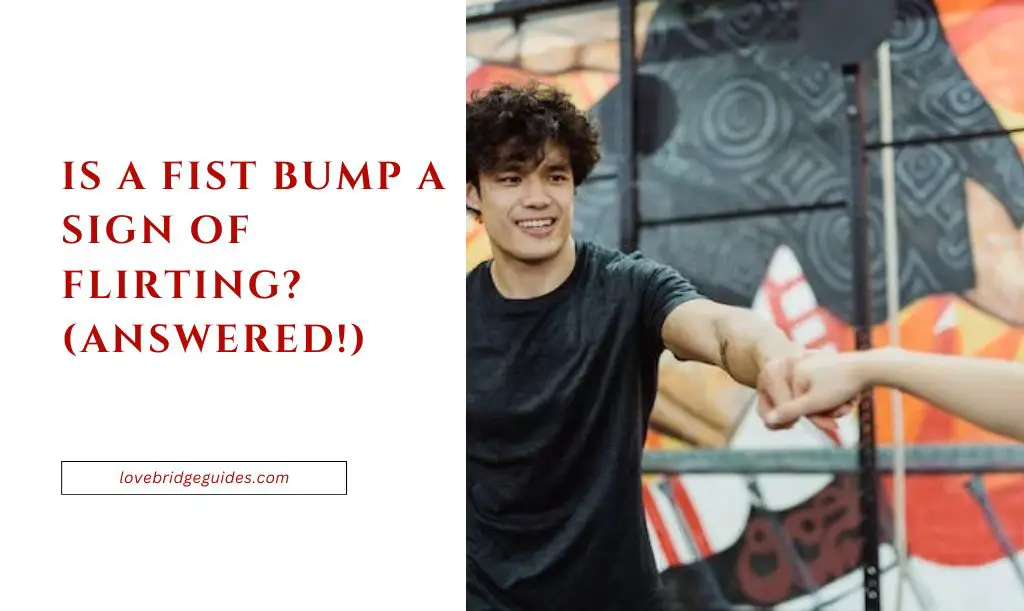The fist bump, often referred to as a “dap” or “pound,” involves two individuals making contact by gently touching their closed fists together.
It is a modern-day alternative to traditional forms of greeting such as handshakes or high-fives.
The origins of this gesture can be traced back to various ancient civilizations where similar hand gestures were used to convey respect, solidarity, or even aggression.
In recent years, the fist bump has become increasingly popularized in mainstream culture.
From sports stars celebrating victories on the field to everyday people acknowledging one another’s accomplishments, this seemingly innocuous gesture has found its way into countless interactions.
Is A Fist Bump A Sign Of Flirting?
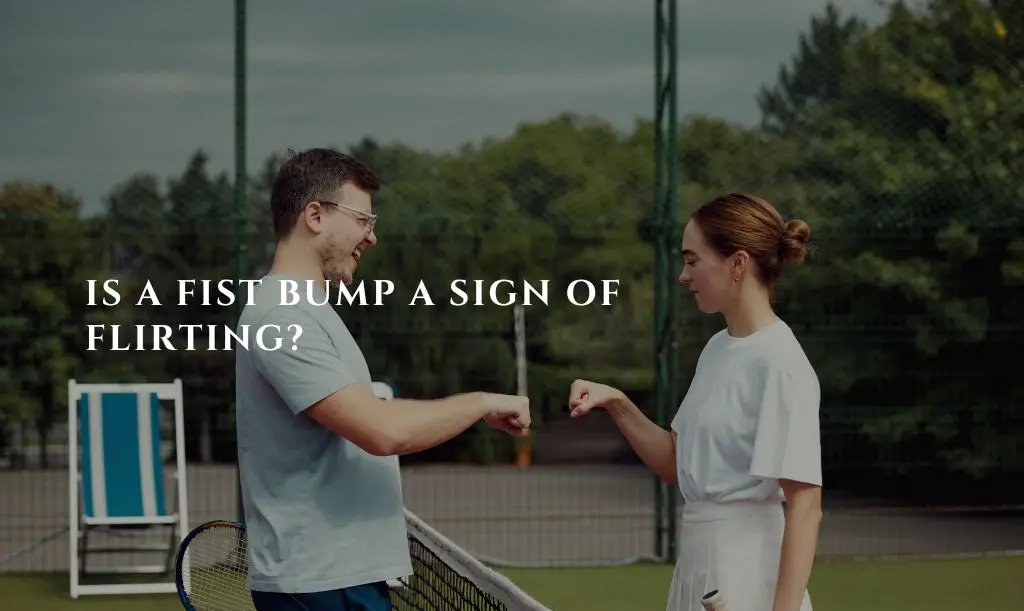
Now comes the exciting part – unraveling the mystery behind whether or not a seemingly harmless fist bump can harbor ulterior motives.
While many argue that it is just another friendly means of connection devoid of romantic implications, others contend that there may indeed be subtle nuances at play when it comes to this peculiar form of physical interaction.
In this article, we will explore both sides of the debate with an open mind while sifting through historical contexts, cultural interpretations, and the broader scope of non-verbal communication.
Understanding the Fist Bump
The fist bump has a rich history that stretches across ancient civilizations.
It is believed to date back to the era when hand gestures were an essential part of communication.
From ancient Egypt to Greece and Rome, people used their hands to convey messages and express emotion.
The fist bump, or variations of it, can be traced in hieroglyphics and ancient artwork depicting warriors showing solidarity as they clenched their fists together.
This action symbolized unity, strength, and brotherhood – long before we even had a word for “fist bump.”
Evolution of Greetings Throughout History
As our societies evolved, so did our greetings.
The once complex systems of non-verbal communication simplified over time.
However, the underlying symbolism behind these gestures remained embedded in our collective consciousness.
Greetings became more standardized across cultures but retained their unique characteristics.
Handshakes became prevalent as a sign of trust and respect in many parts of the world.
Still, there were those who yearned for an alternative that conveyed warmth with less formality – enter the fist bump.
Cultural Significance of the Fist Bump
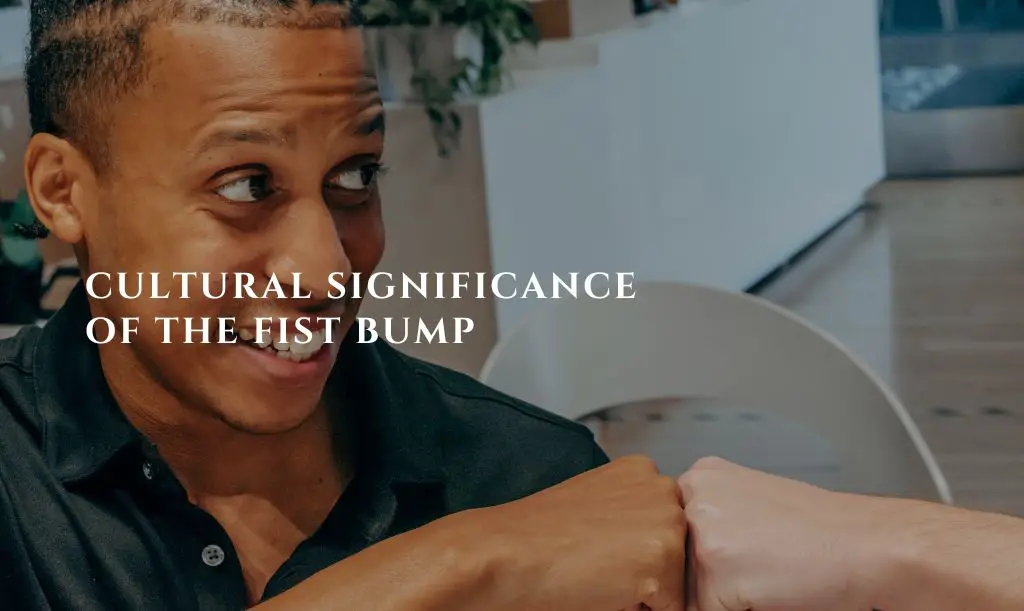
In some parts of Africa, for instance, it represents celebration or victory – a way to express joyous emotions during tribal dances or ceremonies.
On the other hand (or should I say ‘fist’), some Asian cultures use it as a respectful greeting among martial artists; an acknowledgment rooted in discipline, strength, and mutual respect.
The symbolism attached to the fist bump varies across the globe, showcasing the beauty of our diverse world and the richness of human expression.
Symbolism and Meanings Associated with the Gesture
Now let us dissect the symbolism that accompanies this iconic gesture!
The clenched fist represents power, resilience, and determination.
When two fists come together in a gentle bump, it signifies a meeting of equals – an unspoken acknowledgment of solidarity and camaraderie.
It is a subtle way to say, “I see you as my equal, my friend.”
The fist bump conveys a sense of unity that transcends words.
It is a silent language that speaks volumes about human connection – an affirmation that we are not alone on this journey through life.
Understanding the historical origins and cultural significance of the fist bump reveals its profound depth beyond its superficial appearance.
It is more than just a cool greeting or an alternative to handshakes; it is an embodiment of our shared history and diversity as human beings.
So next time you exchange a friendly fist bump with someone, remember its roots and appreciate the unspoken messages it carries with grace and power.
Non-Verbal Communication and Flirting
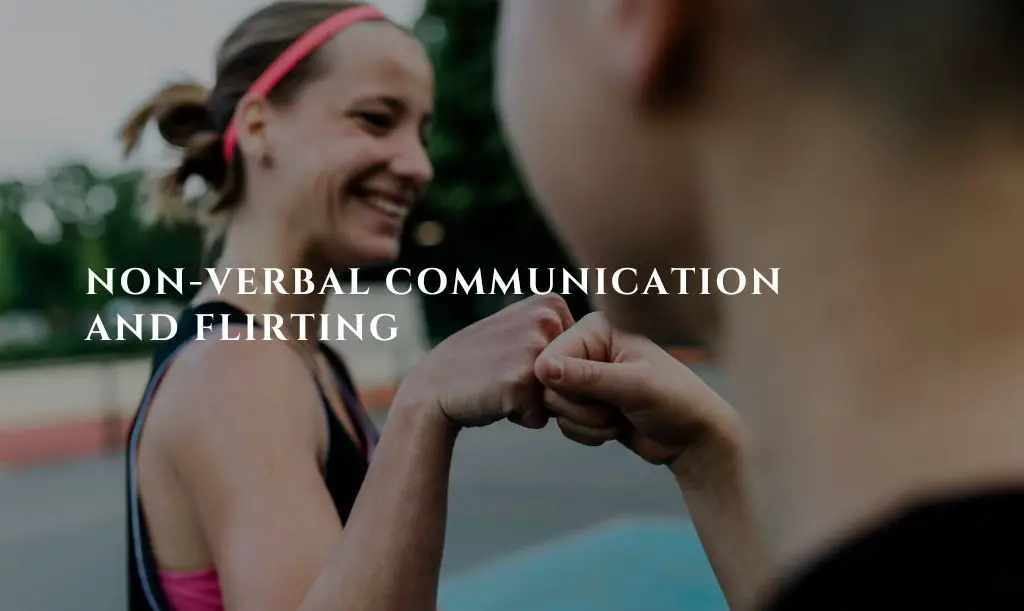
To truly understand whether a fist bump is a sign of flirting, we must delve into the realm of non-verbal communication.
Humans are complex beings who rely not only on spoken words to convey their intentions but also on subtle cues that can speak volumes without ever uttering a syllable.
Body language plays a pivotal role in conveying messages, often revealing more than words ever could.
In the realm of flirting, non-verbal cues become even more significant as individuals engage in an intricate dance of subtle hints and signals.
When it comes to flirting, certain non-verbal cues have become almost universally recognized as indicators of interest.
Take, for instance, eye contact – the meeting of gazes can ignite sparks and establish a connection that goes beyond mere words.
A lingering smile can communicate warmth and attraction in ways that verbal banter simply cannot capture.
Body posture also plays a crucial role; leaning in closer, mirroring each other’s movements – these actions create an unspoken bond between two individuals.
Of course, touch is another powerful form of non-verbal communication frequently associated with flirtation.
A gentle brush against the arm or an innocent hand graze can send shivers down one’s spine and set hearts racing.
Touch has the ability to convey intimacy without breaching boundaries – when done right, it becomes an art form in itself.
Analyzing the Fist Bump as a Flirting Signal
Now let’s explore whether the seemingly innocuous fist bump can be interpreted as a flirtatious gesture.
One must consider various contextual factors that influence interpretation before jumping to conclusions.
The relationship dynamics between those involved play a significant role – friends or acquaintances who engage in playful teasing may use this gesture as part of their banter without harboring any romantic intentions.
In a social setting, cultural norms also come into play.
It’s important to recognize that different cultures have their own unique ways of expressing friendliness and camaraderie.
In some societies, a fist bump may be nothing more than a friendly acknowledgment, while in others, it might carry romantic undertones.
However, it is undeniable that there can be potential flirtatious implications behind a fist bump.
When two individuals share a strong physical attraction and chemistry, a simple fist bump can become charged with unspoken desire.
In such cases, the gesture serves as an opportunity for subtle physical contact and can function as an invitation for further connection.
Alternative Interpretations for Fist Bumps
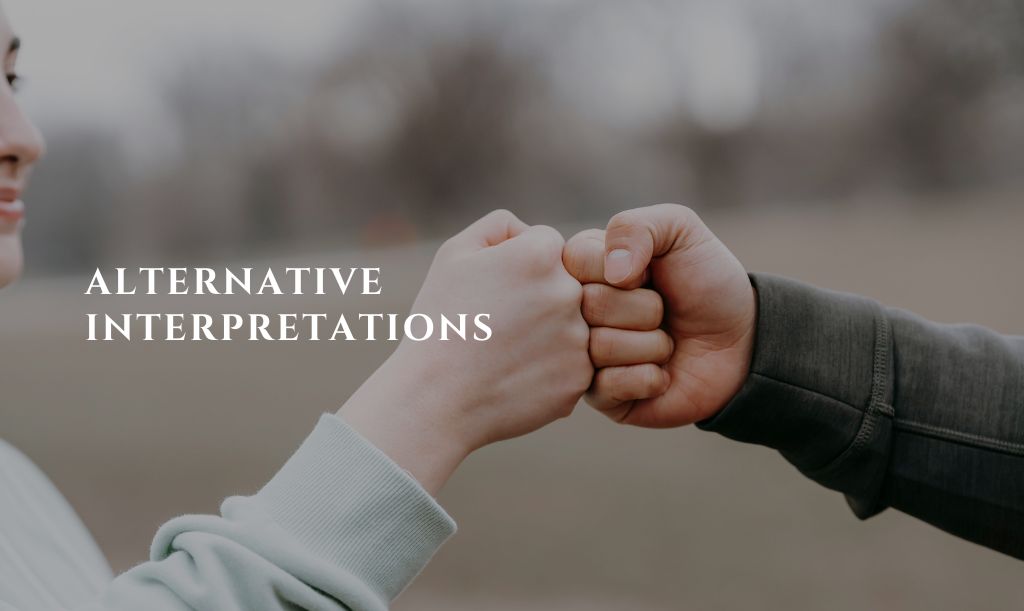
While some may argue that the fist bump is exclusively reserved for flirting purposes, it is essential to consider alternative interpretations before jumping to conclusions about its significance.
One alternative context where fist bumps commonly occur is in professional settings.
Sports teams celebrating achievements often engage in this gesture as a display of unity and camaraderie.
Similarly, colleagues acknowledging success or simply sharing solidarity may opt for the familiar fist-to-fist contact without any ulterior motives.
Furthermore, personal preferences greatly influence individuals’ choice of greetings and gestures.
Some people naturally shy away from engaging in physical contact due to personal boundaries or cultural upbringing.
Therefore, it would be unfair to assume that every instance of a fist bump automatically implies flirting.
Is A Fist Bump A Sign Of Flirting: Conclusion
While the debate surrounding whether a simple fist bump is a sign of flirting continues to stir discussion, we must remember that non-verbal communication is highly subjective and influenced by various factors.
While the act itself may hold flirtatious potential under certain circumstances like strong chemistry or playful banter between friends, it is crucial not to jump to conclusions without considering the broader context and cultural nuances.
Ultimately, it is essential to approach any gesture or interaction with an open mind and respect for individual preferences and boundaries.
By doing so, we can foster genuine connections based on mutual understanding and appreciation.
Related Articles:
- https://lovebridgeguides.com/why-do-women-need-so-much-attention/
- https://lovebridgeguides.com/5-dates-and-he-hasnt-made-a-move/
- Does A Prom Date Mean Anything? (Answered!) - 20 February 2024
- Boyfriend Refers To Me In Third Person (Explained!) - 20 February 2024
- Is Sending Memes Flirting? Find Out Here! - 20 February 2024

